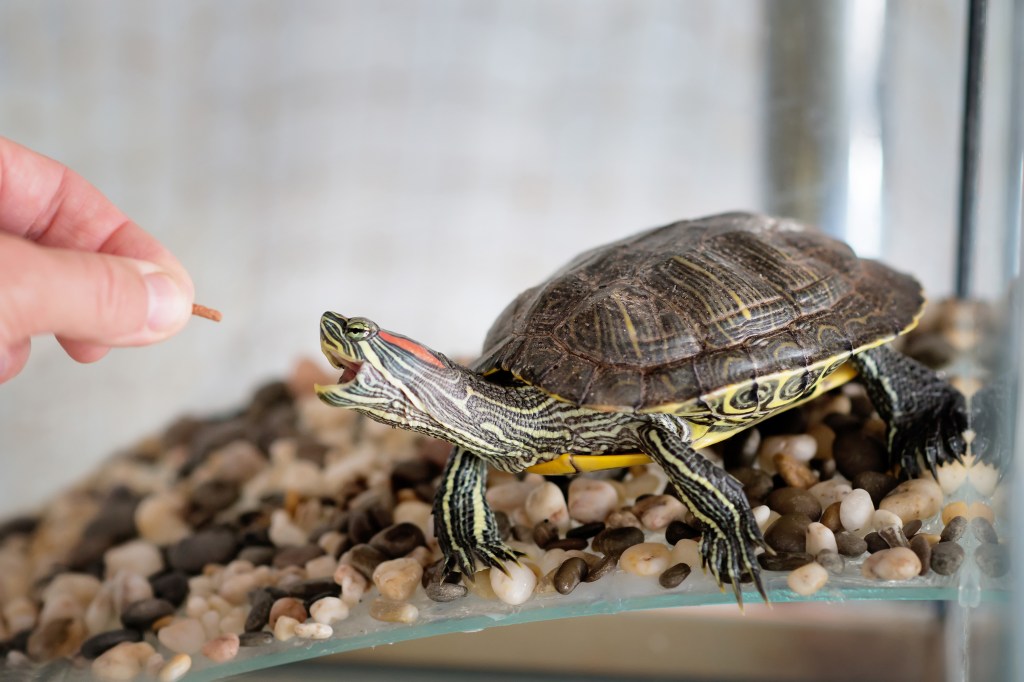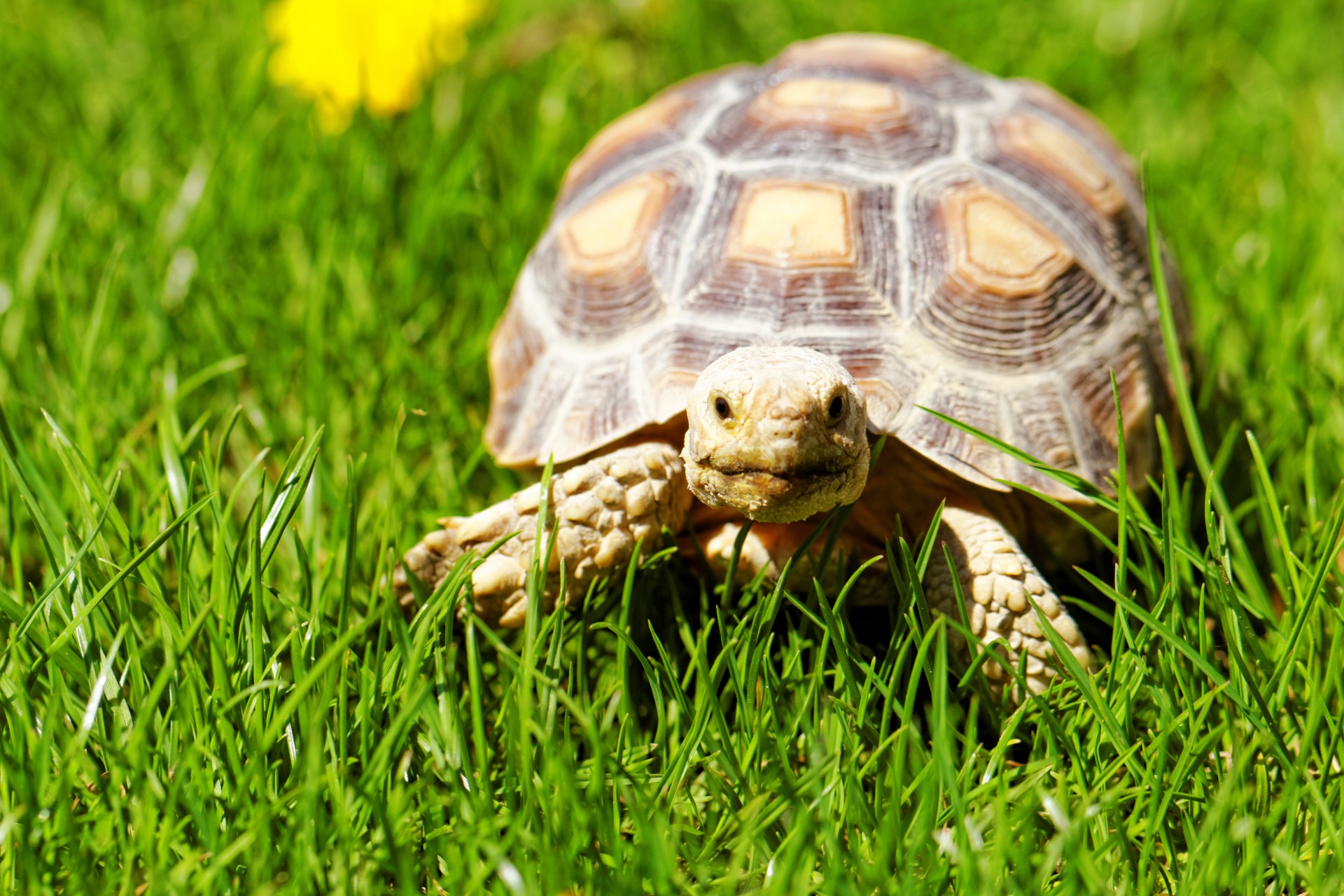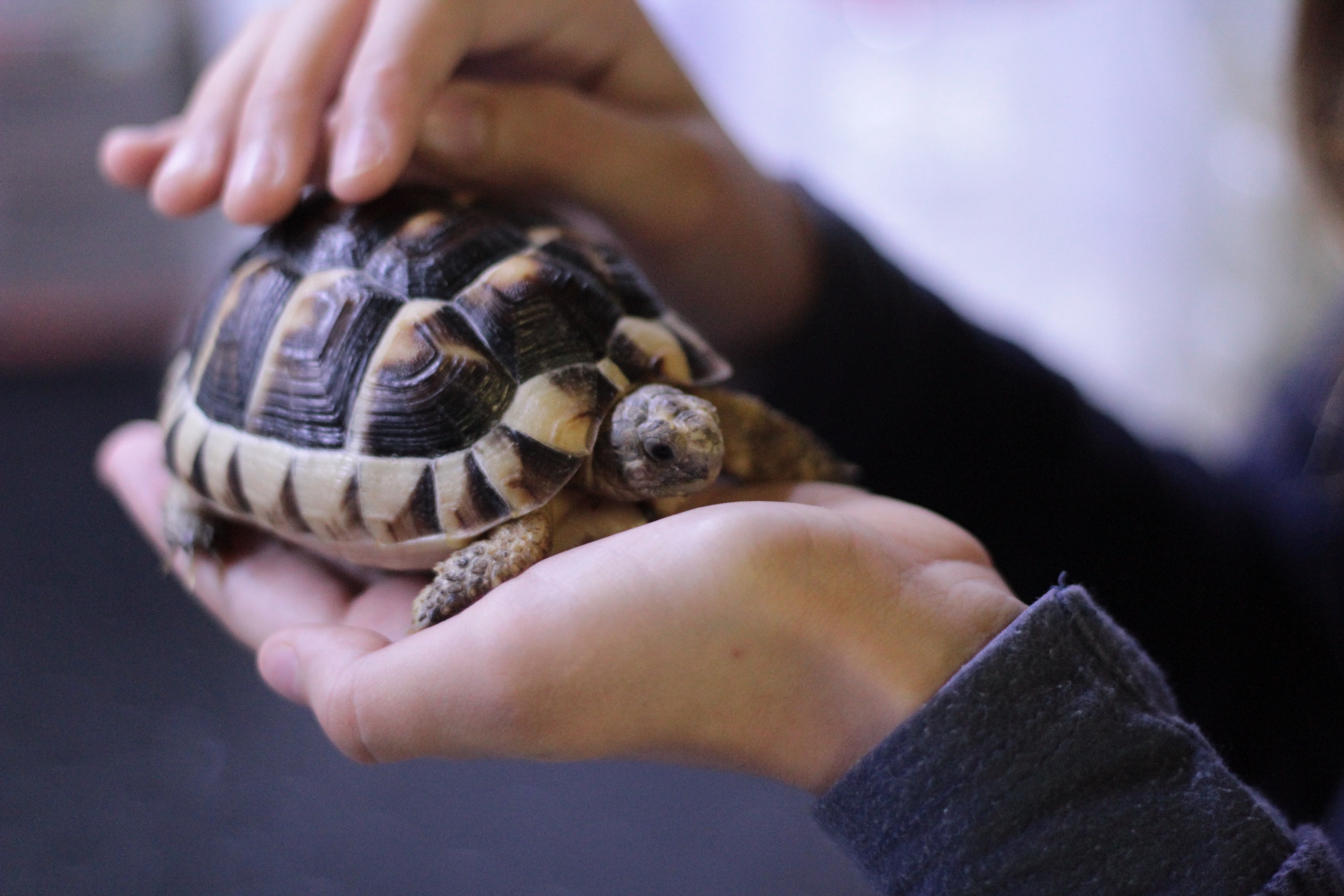
You probably have a fair idea of what to feed a dog or cat, but bringing home your first reptile will completely change what goes into your pet pantry. Turtles, in particular, have something of a confusing diet since there are a few different types and they eat different things.
On the one hand, aquatic turtles live almost all of their lives in water and eat there, too. The flip side is that tortoises usually only eat vegetables and live on land. All of these pets need distinct menus, so you should think about what kind of turtle you want and adjust your feeding habits to match. So, what do turtles eat? We’ll walk you through a nutrition plan for your animal, no matter what.
What should you feed an aquatic turtle?

These guys are omnivores, and they need a mix of veggies, pellets, and live protein. This group includes red-eared sliders and painted turtles, which are both water-loving guys. As babies, they will eat a lot of protein, and when they get older, they’ll switch to more and more vegetables.
For an adult aquatic turtle, you should provide about 50% vegetables, 25% turtle pellets from the pet store, and 25% live animals. The live animals will usually be feeder fish that go straight into the water to give your pet something to do — they’ll love catching it. Box turtles eat a similar diet, but they’re a bit unique as they spend more time on land than their swimming cousins. Because of this, they might eat grasshoppers or crickets instead of feeder fish.
What should you feed a tortoise?

First, we’ll get this out of the way — yes, technically, tortoises are a type of turtle, but they have some pretty big differences from everything you think of when you picture a turtle. One of the main ones is that they eat almost entirely plants.
For this group, stick to leafy greens and fruits once per day so they get enough food and nutrients. You can also try tortoise feed or hay, but we find fresh is often best. A couple of tortoises do need to eat meat, so always check in with your breeder or vet to determine the right meal plan.
What fruits and vegetables can a turtle eat?

Generally, think dark, leafy veggies that seem healthy, like collard greens, spinach, and bok choy. However, they can also nibble on carrots, green beans, and broccoli now and then. Avoid celery and iceberg lettuce, which will fill their tummy without providing the proper nutrients. For fruits, try apples, melons, and bananas to start.
All animals wind up with food preferences and you may discover that the spinach gets completely devoured while the cantaloupe stays around for days. In that case, double down on what your pet likes. But remember, variety is the spice of life. It’s crucial that your reptile receives a balanced diet, including different types of fruit and vegetables.
What can’t turtles eat?

Turtles and tortoises want fresh veggies, and you should avoid frozen whenever possible (canned is a definite no as they often contain salt or other preservatives). Frozen fish shouldn’t go into the tank, either. In terms of insects, while some turtles love crickets, you want to get these from an approved buyer. You never really know what you’re bringing into their house (and yours) when you get anything from the outdoors.
For similar reasons, don’t feed your pet raw meat. Just like in humans, too much sugar will start to take a toll on your reptile, which is why we recommend making the low-calorie leaves their staple. Finally, no avocado allowed in turtle town.
Final thoughts

Like many humans, turtles of all kinds benefit from some extra vitamins and may require a supplement for optimal health. Calcium powder can go onto your pet’s vegetable meal a couple of times per week. Some owners also use a process called gut loading, where they ensure the food, like insects, already contains extra nutrients before it goes down the turtle’s mouth.
You may want to work through your plan with your vet, keeping in mind your turtle’s specific health needs. All this food can wind up costing a bit even though it’s not much per month, maybe $40. But turtles, and especially tortoises, can live for decades, occasionally up to 100 years. That’s a lot of lettuce that you’ll need to buy for your beastie! Try to calculate all costs in advance so you have a good idea of what you’re getting into, and assume you’ll have your beloved pet for quite a long time.



